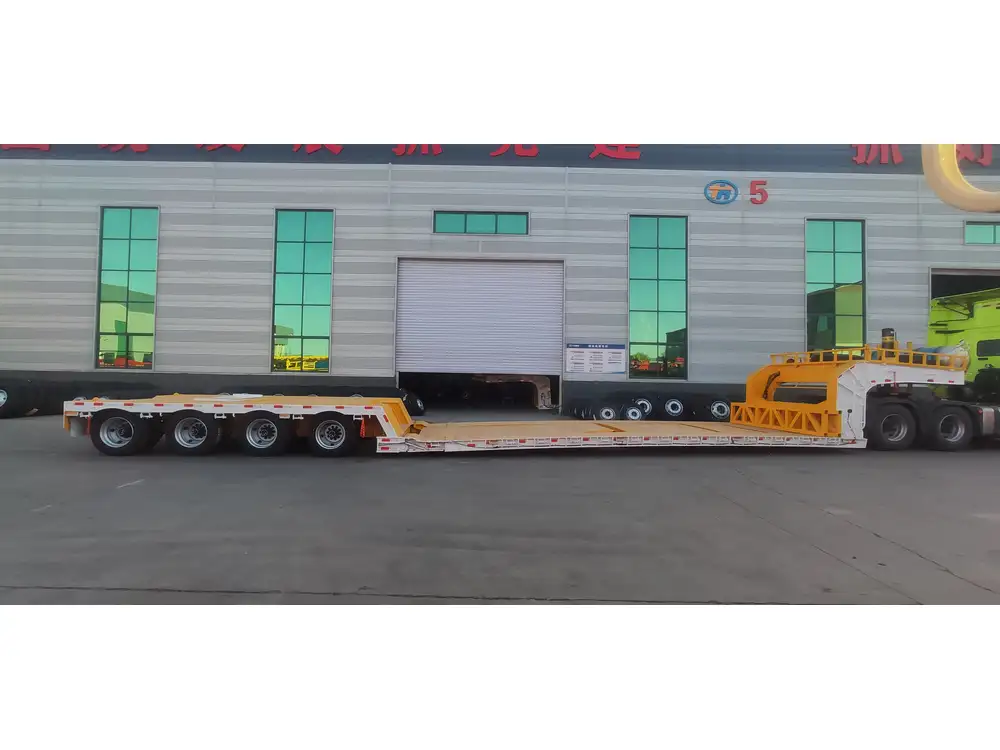Introduction to Air Storage Tanks in Commercial Vehicles
In the commercially demanding world of transportation, conventional tractor-trailer combinations stand out as the backbone of freight logistics. One crucial element within these vehicles is the air storage tank system, which plays a vital role in ensuring safe and efficient operation. Proper knowledge of the air storage tanks—not only their quantity but also their functionality—can significantly aid in maintaining peak vehicle performance and regulatory compliance.
The Role of Air Storage Tanks
Air storage tanks serve as reservoirs for compressed air in heavy-duty vehicles. The compressed air generated by the vehicle’s air compressor is stored here, and it’s utilized primarily for the braking system, suspension control, and various auxiliary functions. The dual importance of air storage tanks lies in their ability to sustain air pressure for braking operations while providing a reserve of air in case of compressor failure.

How Many Air Storage Tanks?
In conventional tractor-trailer setups, the number of air storage tanks can vary based on the specific configuration, manufacturer, and vehicle purpose. Generally, you can expect to find:
Standard Configuration: Most conventional tractors are equipped with two primary air storage tanks. The “wet” tank typically collects moisture separated from the compressed air, while the “dry” tank stores dry air for immediate use by the brake system.
Additional Tanks: Some setups might include one or two auxiliary tanks that enhance air supply for high-demand operations, such as when towing heavy loads or incorporating advanced trailer braking systems.
Breakdown of Air Storage Tank Functions
1. Compression and Reservoir
The air compressor takes in ambient air and compresses it, sending it through the air lines into the reservoirs (air storage tanks). This pressurized air is then stored for utilization as needed.

2. Braking System Operation
The air stored in these tanks is primarily used for:
- Spring Brake Application: Engaging the spring brakes in emergency or parking situations.
- Service Brake Modulation: Ensuring a gradual and controlled slowing of the vehicle.
3. Moisture Control
The “wet” tank is designed to collect moisture and contaminants that can accumulate during air compression. Regular drainage of this tank is crucial to prevent system freeze-ups and corrosion in other components.
Factors Affecting the Number of Air Tanks
Manufacturer Specifications
Different manufacturers often have unique designs and configurations that can affect the number of air storage tanks.
Load Requirements
Heavy-duty trucks designed to transport larger payloads may require additional air storage to manage increased braking demands effectively.
Functionality Features
Tractors equipped with advanced braking systems like ABS (Anti-lock Braking System) may also include extra air tanks to enhance responsiveness and reliability.

Important Maintenance Practices for Air Storage Tanks
Regular Inspection: It’s essential to routinely check for leaks, cracks, and corrosion.
Moisture Drainage: Regularly draining moisture from the “wet” tank helps maintain the efficiency and longevity of the air storage system.
System Testing: Conducting pressure tests ensures that the tanks are functioning optimally.
Benefits of Properly Configured Air Storage Systems
Enhanced Safety: Adequate air storage ensures that the braking system can perform efficiently, contributing to overall vehicle safety.
Increased Efficiency: More storage means less reliance on the compressor, allowing it to work more efficiently and prolonging its life.
Improved Performance: With reliable air supply, drivers can achieve consistent braking power which is vital for safe maneuvering.
Common Issues Associated with Air Storage Tanks
| Issue | Description | Solution |
|---|---|---|
| Moisture Buildup | Excess moisture can freeze, affecting braking performance. | Regular drainage and maintenance. |
| Air Leaks | Loss of air can lead to poor braking ability. | Regular inspection for cracks or wear. |
| Contaminated Air | Contaminants can clog lines and impact operational safety. | Install filters and regularly service the system. |
| Pressure Drops | Insufficient storage can result in lost braking capability. | Increase tank capacity or service compressor. |

Conclusion: Maximizing Efficiency with Air Storage Tanks
In summary, understanding the number and functions of air storage tanks in conventional tractor trailers is paramount for manufacturers, operators, and fleet managers alike. These components, typically ranging from two to four in number, serve critical roles in vehicle performance and safety in heavy-haul transportation.
By adopting rigorous maintenance practices and being informed about potential issues, stakeholders can ensure that their air storage systems function at peak efficiency. In an industry where precision and reliability are non-negotiable, comprehension of technical specifications regarding air storage tanks is a step toward safer and more effective freight transport solutions.
For those involved in the purchase or maintenance of tractor-trailer combinations, considering the design and configuration of air storage tanks should be a priority. With the right knowledge and resources, it is possible to optimize these systems, improving both the safety and efficiency of operations in the demanding field of transportation logistics.
Frequently Asked Questions (FAQs)
1. Can I convert my vehicle to include more air storage tanks?
Yes, although this will depend on the design of your current vehicle and the specific needs for air supply.
2. How often should I drain the wet tank?
It is recommended to drain the wet tank daily or as advised by your vehicle’s manufacturer.
3. Are air storage tanks regulated?
Yes, they are subject to safety inspections and maintenance requirements according to federal and state regulations.
Key Takeaways
- Conventional tractor-trailers typically have two primary air tanks with the option for one or more additional tanks.
- Regular maintenance is essential to ensure the functionality and longevity of the air storage system.
- A well-designed air storage system contributes greatly to the overall safety and efficiency of commercial vehicles.
By maintaining a strong command over the air storage systems in your vehicles, you not only enhance performance but promote a culture of safety that extends throughout the entire fleet.



